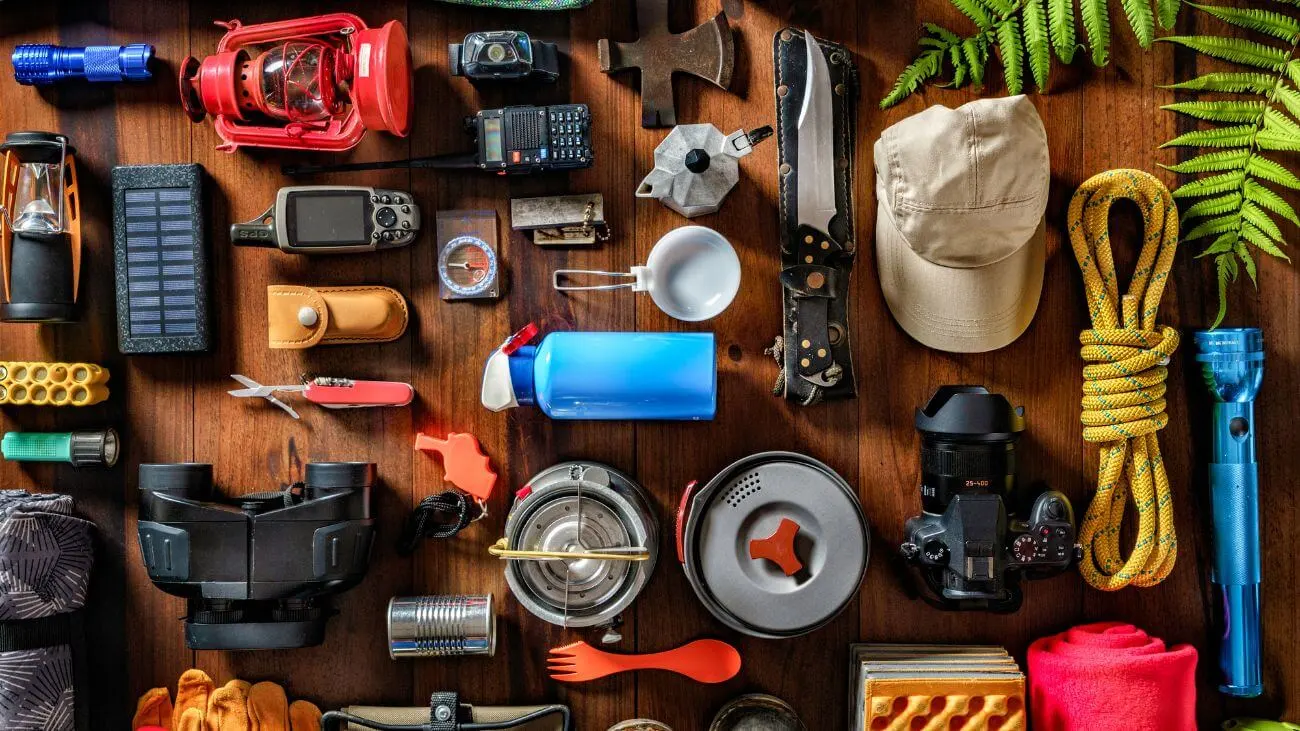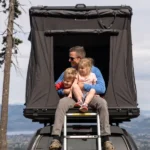Discover the ultimate overlanding gear essentials for beginners and experienced travelers. Explore must-have equipment, expert tips, and a complete overlanding gear checklist to ensure safe and enjoyable off-road adventures.
Introduction to Overlanding
Overlanding has emerged as one of the most exhilarating forms of adventure travel, combining off-road exploration with self-reliance and a deep connection to nature. Unlike conventional camping or road trips, overlanding emphasizes the journey as much as the destination, often spanning multiple days, regions, or even countries. Proper preparation is paramount, and equipping yourself with the right gear can make the difference between a smooth, enjoyable experience and an arduous, unsafe trip.
The term “overlanding” refers to self-sufficient travel to remote destinations, typically via a four-wheel-drive vehicle, where travelers carry everything necessary to sustain themselves. With its rising popularity, enthusiasts from beginners to seasoned explorers worldwide are seeking guidance on overlanding gear essentials to ensure safety, comfort, and efficiency on every trip.
Why Choosing the Right Overlanding Gear Matters
Selecting the appropriate overlanding equipment is not merely a matter of convenience; it is a critical aspect of safety and overall travel success. Several key reasons underscore the importance of carefully choosing your gear:
- Safety and Reliability
Off-road conditions can be unpredictable. Vehicles may encounter mud, sand, rocky terrain, or steep inclines. Having reliable gear, such as recovery tools and emergency kits, can prevent accidents and ensure you are prepared for any eventuality. - Comfort and Convenience
Extended trips require a degree of comfort to maintain morale and physical well-being. Quality camping equipment, portable cooking setups, and organized storage systems make overlanding more enjoyable and less stressful. - Efficiency and Preparedness
Proper gear minimizes wasted time and resources. A well-equipped vehicle reduces the risk of mechanical issues, ensures food and water availability, and enables quick responses to emergencies.
Essential Overlanding Gear Categories
Overlanding gear can be broadly categorized into vehicle essentials, navigation and communication tools, camping and shelter equipment, safety and emergency items, food and water supplies, and personal gear. Each category contributes to a comprehensive and reliable setup for any overland adventure.
Vehicle Essentials
The vehicle serves as the cornerstone of any overlanding expedition. Ensuring it is well-equipped and maintained is critical.
- Off-Road Capable Vehicle: A four-wheel-drive or all-wheel-drive vehicle with sufficient ground clearance and payload capacity is essential.
- Recovery Gear: Items such as a winch, tow straps, shackles, and traction mats can rescue a vehicle stuck in mud or sand.
- Vehicle Maintenance Tools: Carry spare parts, a jack, tire repair kit, air compressor, and essential hand tools. Regular maintenance checks before trips reduce the risk of breakdowns.
- Tires and Suspension: Off-road tires, a spare tire, and a durable suspension system are critical for navigating rugged terrain.
Navigation & Communication Equipment
Overlanding often involves remote regions with limited connectivity, making navigation and communication tools indispensable.
- GPS Devices and Topographic Maps: Ensure you have reliable GPS navigation and hard-copy maps for areas without signal coverage.
- Compass: A basic compass is a crucial backup for orientation.
- Two-Way Radios: Useful for communicating with fellow travelers or during emergencies in areas with no cell service.
- Satellite Phones and Emergency Beacons: Provide critical contact options for emergencies in remote locations.
Camping & Shelter Gear
Shelter and comfort are vital for multi-day trips.
- Tents and Sleeping Gear: Roof-top tents, ground tents, sleeping bags rated for expected temperatures, and sleeping pads ensure a restful night.
- Cooking Equipment: Portable stoves, cookware, utensils, and a portable fridge/freezer facilitate meal preparation on the road.
- Lighting: Headlamps, lanterns, and vehicle-mounted lights ensure visibility during nighttime activities.
- Tables and Chairs: Compact, foldable furniture improves comfort and organization at campsites.
Safety & Emergency Gear
Preparedness for emergencies can be life-saving.
- First Aid Kits: Include bandages, antiseptics, medications, and emergency blankets.
- Fire Extinguishers: A must-have for vehicle or campsite fires.
- Personal Protective Equipment (PPE): Gloves, safety glasses, and masks.
- Survival Kits: Include signaling devices, emergency rations, water purification tablets, and multi-tools.
Food & Water Essentials
Sustenance is a fundamental requirement for extended overland trips.
- Water Storage and Purification: Carry sufficient water in durable containers and include purification methods like filters, tablets, or UV purifiers.
- Food Supplies: Non-perishable, high-calorie foods, energy bars, and ready-to-cook meals.
- Portable Cooking Gear: Compact stoves and fuel ensure you can prepare hot meals anywhere.
- Storage Solutions: Keep food organized and protected from wildlife with sealed containers and coolers.
Personal & Clothing Gear
Personal comfort and protection from environmental factors are essential.
- Weather-Appropriate Clothing: Layered clothing suitable for varying climates, including waterproof jackets and thermal wear.
- Footwear: Durable, comfortable boots for walking, hiking, and driving.
- Sun Protection: Hats, sunglasses, and sunscreen.
- Insect Repellent: Protects against insects and disease in forested or tropical regions.
Must-Have Overlanding Gear for Beginners
Beginners often face a steep learning curve, making prioritization critical. Essential beginner-friendly gear includes:
- Basic recovery kit (tow straps, shackles)
- Compact roof or ground tent
- Portable stove and minimal cookware
- First aid kit and fire extinguisher
- GPS device and maps
- Durable clothing and boots
As experience grows, enthusiasts can gradually add advanced gear like satellite communication devices, larger solar panels, and specialized off-road equipment.
Tips for Packing and Organizing Overlanding Gear
Efficient packing ensures accessibility and prevents damage.
- Weight Distribution: Distribute heavy items evenly to maintain vehicle stability.
- Accessibility: Keep frequently used items like recovery gear, water, and first aid kits within easy reach.
- Organization Systems: Use storage bins, cargo nets, and drawer systems to organize gear.
- Maintenance: Clean and inspect gear regularly to extend its lifespan.
- Labeling: Label storage compartments to quickly locate items during travel.
Overlanding Gear Checklist Table
| Category | Essential Items | Purpose | Beginner / Advanced |
|---|---|---|---|
| Vehicle | Off-road vehicle, spare tire, jack, hand tools | Mobility, repairs, safety | Both |
| Recovery Gear | Winch, tow straps, shackles | Vehicle extraction | Both |
| Navigation | GPS, maps, compass | Orientation and route planning | Both |
| Communication | Two-way radios, satellite phone | Emergency contact | Advanced |
| Shelter | Roof tent, sleeping bag, sleeping pad | Rest and protection | Both |
| Cooking | Portable stove, cookware, fridge | Food preparation | Both |
| Safety | First aid kit, fire extinguisher, PPE | Personal safety | Both |
| Water & Food | Water containers, purification, non-perishable food | Sustenance | Both |
| Clothing | Weather-appropriate attire, boots, gloves | Comfort and protection | Both |
| Lighting | Headlamps, lanterns | Visibility at night | Both |
Frequently Asked Questions (FAQ)
Q1: What are the essential overlanding items for beginners?
A1: Beginners should focus on vehicle recovery gear, shelter, basic cooking equipment, a first aid kit, and navigation tools. Prioritize lightweight, multi-purpose items to reduce bulk.
Q2: How much should I spend on overlanding gear?
A2: Costs vary depending on experience and trip length. Beginners can start with a basic setup under $1,000, gradually upgrading over time as needs evolve.
Q3: Can I overland with a regular SUV?
A3: Yes, with careful route planning and essential gear. Avoid overly rugged trails and ensure your vehicle is mechanically sound.
Q4: What is the most important safety gear for overlanding?
A4: First aid kits, recovery tools, fire extinguishers, and emergency communication devices are crucial for ensuring safety on remote trips.
Q5: How do I maintain my overlanding gear?
A5: Regular cleaning, inspection, and proper storage extend the life of your gear. Replace worn-out items promptly and check vehicle readiness before every trip.
Conclusion & Call to Action
Proper preparation is the cornerstone of any successful overlanding adventure. Equipping yourself with the right overlanding gear essentials ensures safety, comfort, and efficiency, whether you are a beginner or an experienced traveler. By investing time and effort into selecting, organizing, and maintaining your gear, you can confidently explore remote destinations and enjoy the journey to its fullest.
For comprehensive guides, detailed gear reviews, and expert advice, visit Just Overland to plan your next adventure. Equip yourself wisely, travel safely, and embrace the freedom of overlanding.







